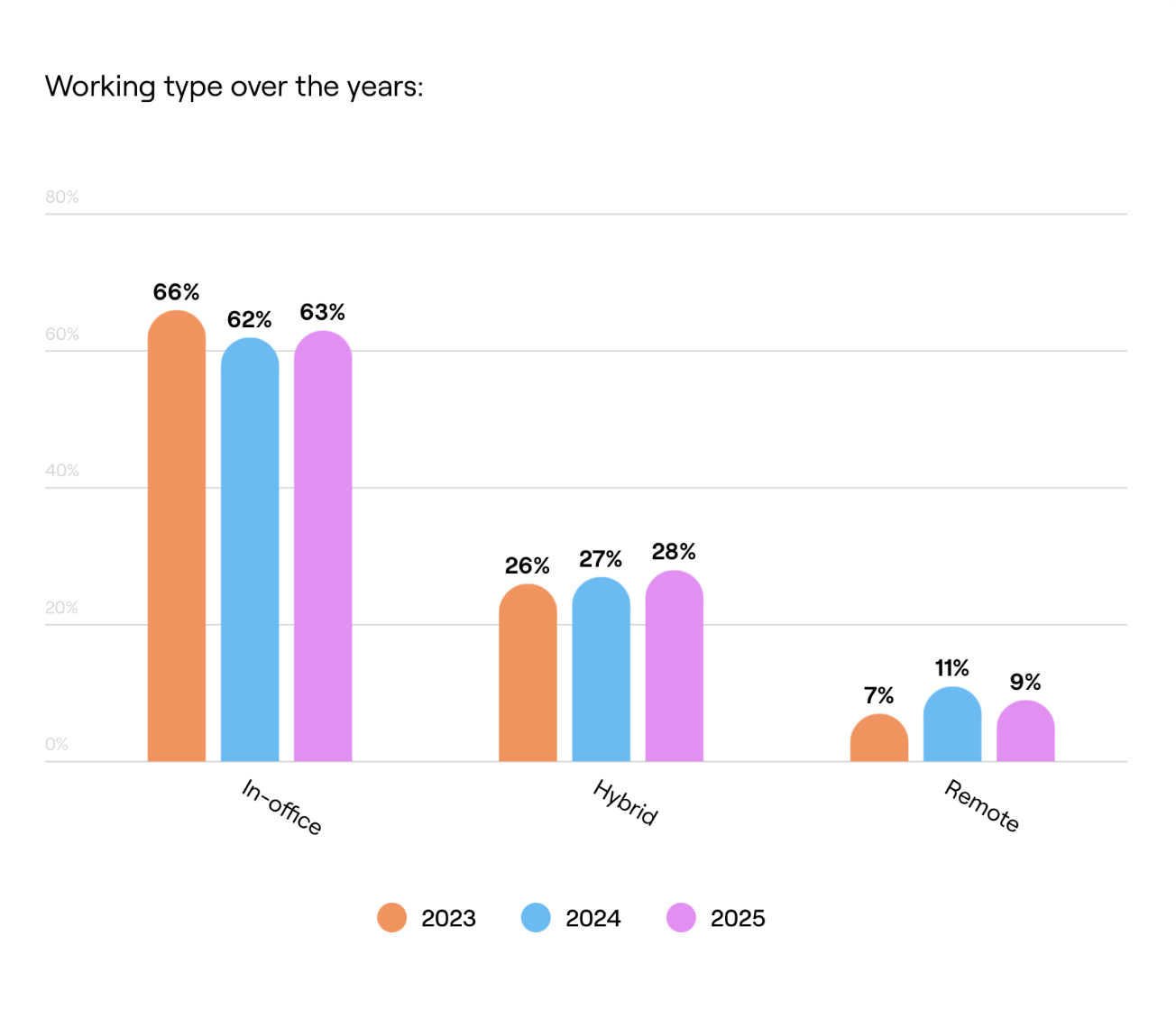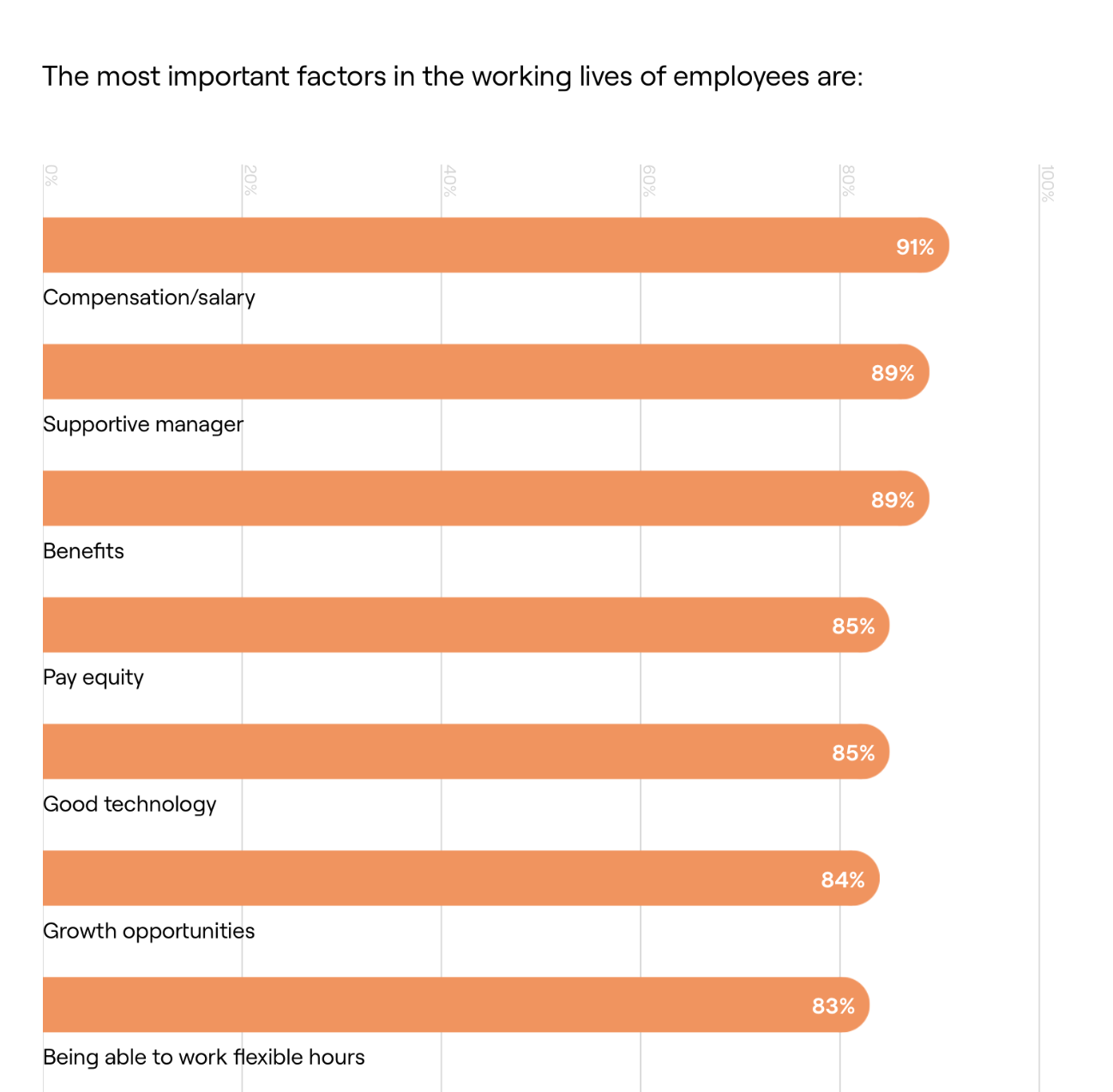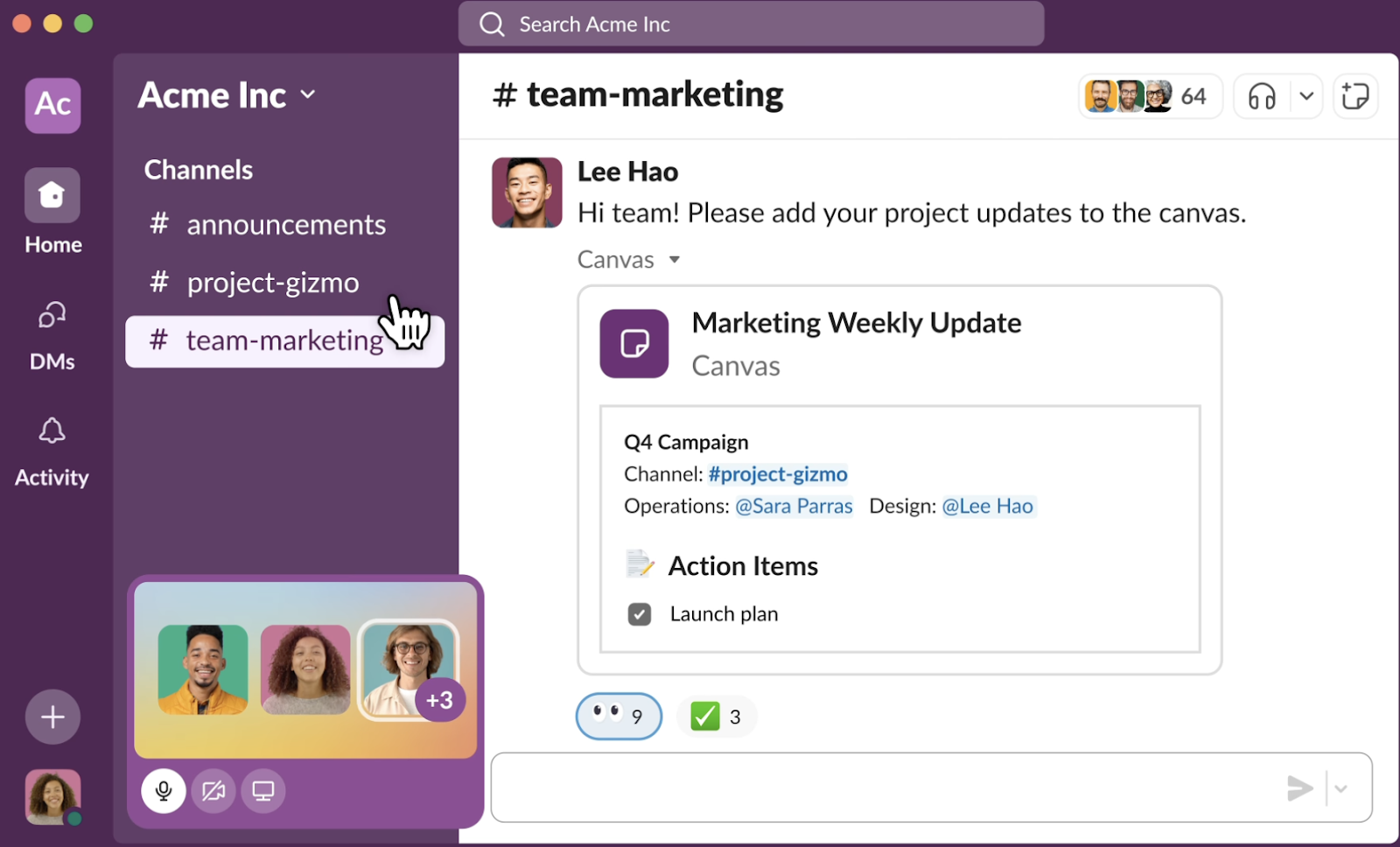Remember when we all thought remote work was temporary? Yeah…that aged well. Here we are, years later, and hybrid work isn't just sticking around. It's become the default for tons of companies.
So now, the real question has shifted. It's no longer a decision of whether teams can work remotely (we know they can). The question for managers is: How do we lead these scattered teams without everyone burning out or losing their minds?
This guide breaks down what actually works, based on what I've seen and what the research tells us. As a manager, read on to gain some practical strategies on how to lead your hybrid or remote team.
🧑💻 Hybrid/remote work setup: What makes a team actually good?
Remote working is among the workplace trends already shaping the future of work. Since the pandemic, it’s become easy to see companies or organizations offering flexible work arrangements.
According to Owl Labs' State of Hybrid Work report, about 63% of American employees have already returned to the office in 2025. However, 28% are in a hybrid work setup, while nearly 10% are working entirely remotely.

But what makes a great team in a hybrid or remote work setup? You know a good team when you see one: They hit deadlines without drama, and team members aren’t running for the exit every few months.
So, heed our advice:
- Clarity beats chaos. First off, everyone needs to know what they're supposed to be doing. Sounds basic, but you'd be surprised how many teams operate in a fog of vague priorities. Good remote teams write things down obsessively. They document decisions, share context, and make information easily accessible.
- Trust > time tracking. Trust matters more when you can't see people. If you're checking whether someone's green dot is on in Slack, you've already lost. Good teams focus on what gets done, not when people are sitting at their desks.
- The last resort…Meetings. The best remote teams I've worked with treat meetings like scarce resources. They collaborate asynchronously by default and only hop on calls when they really need to hash something out together.
😱 Remote work challenges: The stuff that goes wrong
Okay, let's talk about what sucks about remote work. Why? That’s because pretending everything's perfect doesn't help anyone.
Let’s get real. There are challenges of managing a team in a hybrid or remote work setup, like:
- Communication is messy. Important decisions get lost in Slack threads. Someone in Sydney missed the meeting because it was scheduled at 3:00 AM (their time). People default to calls for everything because typing feels like too much work.
- There's a visibility problem. How do you know if someone's struggling when you can't see them? How do you gauge team energy through a screen? One bad Zoom connection, and suddenly someone seems disengaged when they're actually just experiencing internet issues.
- Tools multiply like rabbits. You've got Slack for chat, Notion for docs, Asana for projects, Miro for workshops...and somehow important information still gets lost. New people join and have no idea where to find anything.
- Company culture gets weird. Those organic hallway conversations that used to spread knowledge? Gone. New hires miss all the unwritten rules. Some people get forgotten in their home offices, while others seem to be in every meaningful conversation.
💡 Practical strategies for managers: What actually works
A successful hybrid or remote work setup lies in the hands of managers. In fact, the same Owl Labs report highlights the value of strong leadership in the hybrid workplace.
According to the report, nearly 90% of employees agree that a supportive manager is one of the most crucial factors in their working lives. Of course, salary/compensation remains the top factor.

But as a manager, here are practical strategies that actually work for a hybrid or remote work setup:
1. Write your culture down ✍️
I mean, really write it down. How do you make decisions? What's the process for giving feedback? When do you use email vs Slack vs a doc comment? Create an actual playbook that new people can read.
Emily Ruby, owner of Abogada De Lesiones, emphasizes the importance of establishing a business culture amidst remote work. She suggests creating a strong team dynamic and fostering good relationships among team members.
When asked how to set a company culture in place, Ruby says, "You can't just hope culture happens; You have to build it over time. For example, we schedule coffee chats, celebrate wins in public channels, and create a random-pairing bot for virtual lunches. It sounds forced, but these little things add up."
2. Go async-first with communication 📞
This isn't about avoiding meetings. It's about being smarter about them. Use Loom videos for updates. Write decision documents with comment periods. Save synchronous time for the messy, creative stuff that actually benefits from real-time discussion.
For example, record a quick Loom update and drop it in a shared channel. Everyone can watch it on their own time and leave comments or questions in the thread. That way, when you do meet live, you're solving problems and not just reading bullet points out loud.
3. Make expectations crystal clear 🪟
I learned this the hard way. You can't just say "be productive" and hope for the best. Define what success looks like this quarter, this month, this week. Make goals visible. Connect everything to actual customer outcomes so people understand why their work matters.
Case in point: Instead of saying "let's boost engagement," define the target, such as increasing customer response rates by 15% this month. Then tie each person's role to that goal so everyone knows how their work contributes. When expectations are clear and measurable, accountability feels natural rather than forced.
4. Get personal about motivation 📣
Sarah, on your team, might love public shoutouts. Meanwhile, Tom would rather get a quiet thank-you message. Ask people what energizes them, especially those employees who are suffering from burnout. Give them projects that stretch their skills without breaking them. Two good questions in a five-minute check-in often beat an hour-long one-on-one.
Learn from Adrian Iorga, founder and President at 617 Boston Movers. As a leader, he believes in the power of employee motivation. This is what he upholds to keep his team moving, literally and figuratively.
Iorga gives a nudge, "People don't stay motivated just because you tell them to work harder. They stay motivated when they feel seen and valued. A little genuine recognition goes a long way. It's the fuel that keeps the team moving."
5. Make flexibility actually flexible 🤸
Flexible work policies aren't just nice to have anymore. They're table stakes for keeping good people. But "flexible" doesn't mean "chaotic." It could also mean adjusting schedules, honoring employee breaks, or even making virtual events engaging.
That said, here's what works:
- Set boundaries, not scripts. Maybe core hours are 10 am to 2 pm in each time zone. Maybe Fridays are no-meeting days. Find what works for your team.
- Make policies stupid-simple. If people need a lawyer to understand your remote work policy, you've already failed.
- Track only what matters. Look at performance, retention, and inclusion. Adjust based on what you find.
6. Keep track without being creepy 🛤️
Nobody wants to be micromanaged, especially remotely. But you still need to know if things are working. Consider measuring ROI on hybrid and virtual team experiences, for example.
Take it from Nicolas Breedlove, CEO of PlaygroundEquipment.com. During the pandemic, it was such a struggle to keep his installation team moving. However, with the right tracking approach and constant support, his team was able to overcome the challenges.
Breedlove gives some practical approaches:
- Define outcomes for each role and team. Use OKRs or just simple goal sheets.
- Do quarterly performance conversations that mix complex data with stories. What worked? What didn't?
- Build simple dashboards for leading indicators: cycle time, customer happiness, defect rates.
- Give feedback quickly and kindly. A comment on a doc or a two-minute video beats waiting for the next one-on-one.
7. Use tools that don't suck 💻
The right tools make everything easier. The wrong ones make you want to throw your laptop out the window. Here's a basic stack that works:

- Chat: Slack or Teams. Pick one. Define what goes where.
- Docs: Notion, Confluence, or just well-organized Google Docs
- Projects: Asana, Trello, Linear—again, pick ONE
- Video: Zoom or Google Meet, with good audio
- Workshops: Miro or FigJam for visual stuff
That said, don't forget your behind-the-scenes essentials. Tools like contract management software keep operations running smoothly by organizing agreements and renewals in one place. When your tech stack actually works together, your team can focus less on chasing documents and more on getting great work done.
Final Thoughts
Leading remote teams well isn't rocket science. Define clear outcomes. Write important stuff down. Communicate intentionally. Make space for human connection. Pick the tools people will use. Create policies with sensible boundaries. Measure results, not activity. And keep asking your team what's working.
Got a practice that transformed your team? Share it. Head over to Confetti for its team-building initiatives, which offer a great team experience and provide an opportunity to swap stories with other managers who face similar challenges.
.png)









